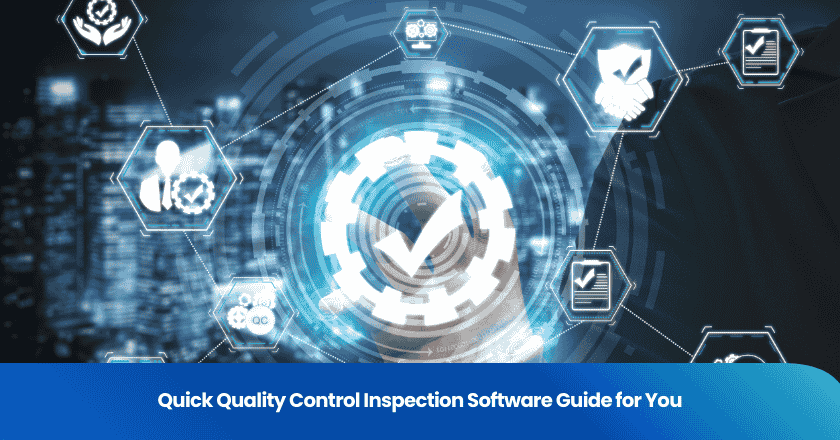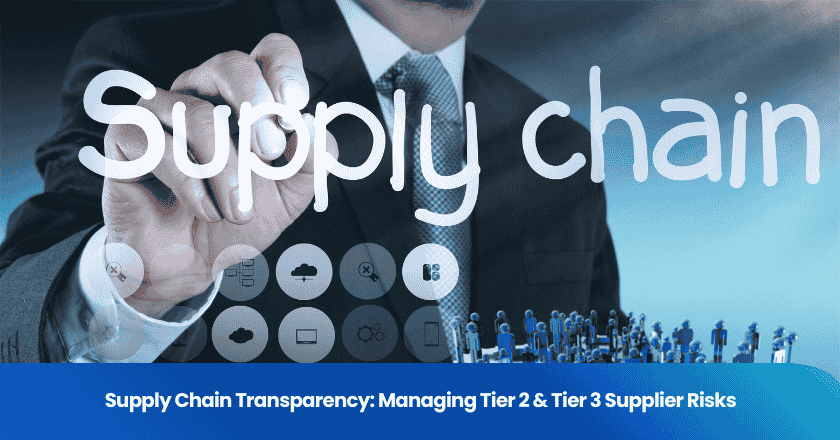
Selecting the right quality control inspection software can transform your inspection process. You want a solution that reduces human error, streamlines documentation, and delivers actionable insights. Consider the most common challenges businesses encounter:
| Challenge | Description |
|---|---|
| Human Error and Inconsistency | Manual inspections are prone to individual judgment errors, leading to missed defects or false positives. |
| Time-Consuming and Labor-Intensive | Traditional methods slow down manufacturing due to manual checks, increasing labor costs. |
| Difficulty in Tracking and Documentation | Paper-based records can be lost or damaged, complicating the tracking of inspection results. |
| Limited Data and Insights | Manual processes provide insufficient data for analyzing quality issues and identifying patterns. |
| Poor Communication and Coordination | Lack of centralized systems leads to miscommunication among teams, resulting in production inefficiencies. |
| Compliance and Regulatory Issues | Incomplete records hinder compliance with quality standards, risking fines or legal issues. |
By comparing features, reliability, and ease of use, you can quickly identify the best fit for your needs.
Key Takeaways
- Choosing the right quality control inspection software can reduce human error and streamline your inspection process.
- Look for software with mobile capabilities to perform on-site inspections and access data in real time.
- Prioritize user-friendly interfaces to simplify training and daily operations for your team.
- Evaluate software based on features like real-time dashboards, customizable checklists, and automated alerts to enhance efficiency.
- Consider your budget and choose flexible pricing models that fit your business needs while ensuring scalability.
Top quality control inspection software
Selection criteria
When you evaluate quality control inspection software, you need to focus on several essential factors. These criteria help you identify the best quality inspection software for your business:
- Predictive capabilities: The software should act as an intelligent filter, adapting to risk signals and helping you prevent defects before they occur.
- Real-time integration with production data: You want a system that cross-references inspection results with production trends, allowing you to spot risk patterns quickly.
- Dynamic inspection rules: The best quality inspection software automatically adjusts inspection rigor based on risk scores, ensuring you maintain high standards.
- Usability: You need a user-friendly interface that simplifies training and daily operations.
- Reliability: The software must deliver consistent performance, minimizing downtime and errors.
- Pricing: You should compare costs to ensure the solution fits your budget while meeting your requirements.
Tip: Prioritize solutions that offer mobile inspection capabilities. These tools enable on-site inspections and immediate data analysis, which are crucial for real-time decision-making.
Why they stand out
The leading quality control inspection software options in 2025 excel because they embrace advanced technologies and align with industry trends. You benefit from innovations such as:
| Innovation Type | Description |
|---|---|
| AR | Overlays digital information onto physical objects, helping you identify faults and maintain equipment. |
| VR | Enables remote collaboration, allowing experts to solve problems without being on-site. |
| Mixed Reality | Provides visual guidance for complex tasks, improving quality assurance through machine learning. |
| Computer Vision | Automates visual inspection, increasing speed and accuracy while ensuring consistent product quality. |
| IoT | Collects real-time data for continuous monitoring of quality across production processes. |
| Blockchain | Maintains transparency and traceability in the supply chain, reducing risks of counterfeit products. |
You see these features driving efficiency and compliance. Automated systems can reduce human inspection errors by up to 40% and increase throughput by 30% in automotive production lines. Visual inspection software supports smart manufacturing, helping you detect defects and improve quality across industries. The best quality inspection software ensures every production step is documented, which enhances traceability and supports regulatory compliance.
Inspection software comparison
Features overview
You want to choose inspection software that matches your workflow and business needs. The top solutions in 2025 offer a range of features that help you automate, track, and analyze your quality control processes. Here is a quick overview of the most important features you should look for:
| Feature | Description | Typical Availability |
|---|---|---|
| Mobile Inspections | Perform inspections on-site using smartphones or tablets. | Most top software |
| Real-Time Dashboards | View inspection results and trends instantly. | Most top software |
| Customizable Checklists | Create and modify inspection templates to fit your process. | Most top software |
| Automated Alerts | Receive notifications for failed inspections or compliance issues. | Most top software |
| Photo & Video Capture | Attach visual evidence to inspection reports. | Most top software |
| Integration APIs | Connect with ERP, MES, or other business systems. | Some top software |
| Offline Functionality | Conduct inspections without internet access and sync data later. | Some top software |
| Analytics & Reporting | Generate detailed reports and analyze trends over time. | Most top software |
| Role-Based Access | Control who can view or edit inspection data. | Most top software |
Note: You should prioritize features that align with your industry requirements. For example, if you work in manufacturing, integration with production data and real-time dashboards will be critical.
Pricing summary
You need to consider your budget when selecting inspection software. Pricing models vary, but most solutions offer flexible plans based on user count, features, or usage volume. Here is a summary of common pricing structures you will encounter:
- Subscription-Based: Pay a monthly or annual fee per user or per site. This model suits businesses that want predictable costs.
- Tiered Plans: Choose from basic, standard, or premium packages. Higher tiers unlock advanced features like analytics or integrations.
- Usage-Based: Pay according to the number of inspections or reports generated. This model works well for businesses with fluctuating inspection volumes.
- Custom Pricing: Some vendors offer tailored quotes for large enterprises or unique requirements.
| Pricing Model | Typical Cost Range (USD) | Best For |
|---|---|---|
| Subscription | $30–$150 per user/month | Small to medium businesses |
| Tiered Plans | $50–$300 per month | Growing teams, added features |
| Usage-Based | $0.10–$1 per inspection | Seasonal or project-based work |
| Custom Pricing | Varies | Large enterprises, special needs |
Tip: Always check for hidden fees, such as setup charges or support costs. Request a detailed quote before making your decision.
User ratings
User feedback gives you valuable insight into how inspection software performs in real-world scenarios. Most top solutions receive high marks for usability, reliability, and support. Here is a summary of typical user ratings based on recent industry surveys:
| Category | Average User Rating (out of 5) | User Feedback Highlights |
|---|---|---|
| Ease of Use | 4.5 | Intuitive interface, easy onboarding |
| Reliability | 4.6 | Stable performance, minimal downtime |
| Support | 4.4 | Responsive customer service, helpful resources |
| Feature Set | 4.3 | Comprehensive tools, customizable workflows |
| Value for Money | 4.2 | Good ROI, flexible pricing |
- Users appreciate software that simplifies inspections and reduces paperwork.
- Many highlight the importance of mobile access and real-time reporting.
- Some users mention that advanced analytics and integration options add significant value.
Remember: You should read recent user reviews and request a demo before committing to any software. This step helps you confirm that the solution meets your expectations and fits your team’s workflow.
Software strengths and weaknesses
Pros and cons
When you compare quality control software, you need to weigh the benefits and drawbacks of each approach. Automated systems bring consistency and scalability, while manual inspections offer flexibility. The table below summarizes the most common pros and cons:
| Type of Inspection | Pros | Cons |
|---|---|---|
| Automated Quality Control | Consistency, Scalability, Lower Labor Costs | Higher Initial Costs, Technical Limits, Not Always Industry-Specific |
| Manual Inspection | Human Judgment, Flexibility, Immediate Feedback | Subjectivity, Fatigue, Slower Speed, Higher Costs |
Tip: Automated quality control software works best when you need to process large volumes and maintain strict standards. Manual methods suit unique or complex inspections.
Pricing details
You will find a range of pricing models in the market. Some quality control software options offer free versions with limited features, while others require a monthly fee per user. Mobile app access is common, but not universal. Here is a simplified overview:
| Plan Type | Free Version | Paid Plan (per user/month) | Mobile App |
|---|---|---|---|
| Option A | Yes | $24 | Yes |
| Option B | No | $199 | Yes |
| Option C | Yes | $39 | Yes |
| Option D | No | $43 | No |
| Option E | No | $32 | Yes |
| Option F | Yes | $31 | Yes |
Note: Always review what each plan includes. Some features, like analytics or integrations, may only be available in higher tiers.
Best use cases
You should match quality control software to your business needs. Automated solutions excel in manufacturing, construction, and industries with repetitive inspections. Manual inspection tools fit best in service industries or projects that require expert judgment. If your team works in the field, prioritize software with strong mobile support. For large enterprises, look for scalable solutions with advanced reporting and integration features.
Quality control software features
Ease of use
You need software that your team can learn quickly. A user-friendly interface helps you focus on product quality instead of struggling with complex menus. Many users praise leading solutions for their intuitive design and fast onboarding. The table below shows real feedback from professionals who value ease of use and strong support:
| User | Feedback |
|---|---|
| Alex Oshmyansky MD, PhD | Describes the software as easy to use and a valuable management tool, with quick support. |
| Adrian Rodriguez | Highlights affordability, quick implementation, and FDA compliance from day one. |
| Josh Rabinowitz | Notes a good balance between ease of use and comprehensive QA coverage, plus ample support. |
You can see that ease of use directly impacts your team's efficiency and helps maintain high product quality.
Integration
You want your inspection software to connect seamlessly with your existing systems. Most top solutions offer integration with ERP, MES, and CRM platforms. This capability allows you to link inspection data with production and customer records. As a result, you improve efficiency and ensure that product quality data flows across your organization.
- Integrates with ERP for production tracking
- Connects to MES for real-time shop floor data
- Links with CRM for customer feedback and quality trends
Integration supports better reporting and helps you make informed decisions faster.
Reporting
Effective reporting stands at the core of quality control. You need tools that generate clear, actionable reports. Modern software provides customizable reporting templates, real-time dashboards, and automated alerts. These features help you track product quality, identify trends, and share results with your team. With robust reporting, you improve efficiency and respond quickly to any issues. You can export reports, schedule regular reporting, and use analytics to drive continuous improvement. Reporting tools also support compliance by documenting every inspection step. When you rely on strong reporting, you boost product quality and maintain high standards. Reporting features save time and reduce manual work, which increases efficiency. You gain a complete view of your operations through detailed reporting.
Support
Reliable support ensures you get the most from your software. You should look for solutions that offer responsive customer service, training resources, and regular updates. Good support helps you resolve issues quickly and keeps your reporting and product quality processes running smoothly. Many users mention that strong support teams make implementation easier and improve overall efficiency.
Scalability
As your business grows, your software must keep up. Leading solutions scale to handle more inspections, users, and data. The table below highlights what you should expect from scalable software:
| Feature | Description |
|---|---|
| Scalability | The software should grow with the business, accommodating increasing data volumes and expanding functionalities. |
Scalable software protects your investment and ensures you maintain product quality and efficiency as your needs change.
User scenarios and recommendations
Small business
You often face tight budgets and limited resources. Quality control inspection software can help you streamline your processes without overwhelming your team. Look for solutions that offer:
- Simple setup and intuitive interfaces
- Affordable pricing plans, such as pay-per-user or usage-based models
- Mobile inspection capabilities for on-the-go teams
- Customizable checklists to fit your unique workflows
Tip: Choose software that allows you to start small and scale as your business grows. This approach ensures you only pay for what you need while maintaining flexibility.
Large enterprise
Large organizations require robust, scalable solutions that support complex workflows and strict compliance standards. You need software that can handle high inspection volumes, multiple locations, and advanced reporting. The following table summarizes key features to consider:
| Key Feature | Benefit for Large Enterprises |
|---|---|
| Enterprise-level workflows | Manage inspections across departments and locations |
| Automated compliance tools | Ensure adherence to industry standards and regulations |
| Customizable reporting | Generate detailed analytics for management and audits |
| Employee training modules | Track certifications and maintain workforce readiness |
| Integration capabilities | Connect with ERP, MES, and other enterprise systems |
Note: Prioritize solutions that offer centralized control and advanced security features. These capabilities help you maintain consistency and protect sensitive data across your organization.
Manufacturing
Manufacturing companies depend on operational efficiency and strict quality standards. The right inspection software should address your need for speed, accuracy, and compliance. Consider the following features:
| Feature | Description |
|---|---|
| Operational Efficiency | Streamlines workflows and reduces errors |
| Compliance | Ensures you meet industry standards and regulations |
| Risk Management | Identifies and mitigates potential risks |
| Document Control | Centralizes document management with approval workflows |
| Audit Management | Automates scheduling and compliance verification |
| Non-Conformance Management | Supports corrective and preventive actions |
| Training Management | Tracks employee certifications |
| Supplier Quality Management | Monitors supplier performance |
| SPC Tools | Provides real-time data monitoring and analysis |
| Reporting and Analytics | Offers customizable dashboards and insights |
| Customer Complaints Management | Addresses and analyzes customer feedback |
| Mobile Accessibility | Enables inspections anywhere on the shop floor |
| Scalability | Adapts to your organization’s growth |
Tip: Select software that integrates with your production systems and supports real-time data collection. This integration helps you identify issues early and maintain high product quality.
Service industry
In the service sector, consistency and customer satisfaction drive your success. Quality control inspection software can help you standardize inspections, reduce errors, and improve visibility. You benefit from:
- Field inspection management tools that minimize mistakes and increase transparency
- Real-time data collection for immediate insights
- Standardized checklists to ensure uniform quality across locations
- No-code platforms that let you adapt workflows quickly without IT support
Many solutions also offer AI-powered features that automate routine tasks and provide ready-to-use templates. These tools help you prioritize inspections based on risk, ensuring you focus on the most critical areas. Automated reporting and compliance tracking further enhance your ability to deliver consistent, high-quality service.
Note: Choose software that allows you to customize templates and workflows. This flexibility ensures you can meet the unique needs of your clients and industry regulations.
Construction inspection software
Construction projects require rigorous inspections to ensure safety, compliance, and quality. You need software that supports field teams, tracks progress, and documents every step. Look for solutions that provide:
- Mobile access for on-site inspections, even in remote locations
- Photo and video capture to document findings
- Customizable checklists for different project phases
- Real-time dashboards to monitor progress and identify issues
- Integration with project management tools for seamless coordination
Tip: Opt for software that offers offline functionality. This feature ensures your team can complete inspections and sync data later, even when working in areas with limited connectivity.
By matching your software choice to your business size and industry, you can maximize efficiency, maintain compliance, and deliver higher quality outcomes.
Quick decision guide
When you need to choose quality control inspection software quickly, focus on your main priorities. The right choice depends on your budget, the need for advanced features, and how simple you want the system to be.
Budget-friendly
If you want to control costs, look for software with flexible pricing models. Subscription-based or usage-based plans help you pay only for what you use. Many solutions offer free versions with limited features, which can be ideal for small teams or short-term projects. You should also check for hidden fees, such as setup or support charges. Scalable options let you start small and expand as your needs grow. Customization options ensure the software fits your industry without extra costs.
Tip: Choose a solution that offers strong customer support and training resources. This helps your team get started quickly and reduces long-term expenses.
Advanced features
For teams that need more than basic inspections, advanced features can make a big difference. Top-tier software often includes:
| Feature | Description |
|---|---|
| Automated Inspection Tools | Simplifies quality checks with digital checklists and automated data collection. |
| Real-Time Monitoring Systems | Provides continuous oversight, tracking quality metrics as they happen. |
| Comprehensive Reporting | Offers detailed documentation for tracking and compliance. |
| Mobile Accessibility | Allows on-site management to perform checks and access data from anywhere. |
These features help you maintain thoroughness, objectivity, and consistency in your inspections. Real-time dashboards and analytics support quick decision-making and improve communication across your team.
Simplicity
If you value ease of use, select software with a user-friendly interface and simple setup. Solutions with drag-and-drop form creation, customizable checklists, and clear workflows reduce training time. High ease of implementation means your team can start inspections with minimal delay.
| Key Feature | Benefit |
|---|---|
| User-friendly design | Quick onboarding |
| Cloud-based access | Work from any location |
| Task allocation | Clear responsibility tracking |
| Progress tracking | Monitor inspection status |
Simple systems help you focus on quality, not software management. Look for platforms that offer online tutorials and live chat support to guide your team every step of the way.
Choosing the right quality control inspection software requires a clear strategy. You should start by defining your objectives and identifying the challenges you want to solve. Evaluate solutions based on features, scalability, and industry fit. Train your team to use the software effectively. Integrate the platform with your existing systems for seamless data flow. Monitor performance and optimize your processes using insights from the software. Take these steps to improve your inspection workflow and achieve consistent quality.
1. Define objectives.
2. Choose the right solution.
3. Train your team.
4. Integrate with existing systems.
5. Monitor and optimize.
FAQ
What are the main benefits of using quality inspection software for inspections?
You gain improved accuracy, faster inspections, and better tracking of data. Quality inspection software automates many tasks, reducing errors and supporting compliance. You can generate audit-ready reports and use real-time reporting to monitor quality. Mobile accessibility lets you complete inspections anywhere, increasing efficiency and quality assurance.
How does construction inspection software help with compliance management?
Construction inspection software streamlines compliance management by standardizing inspections and documentation. You can track regulatory compliance, manage audit-ready reports, and ensure every inspection meets industry standards. Automated workflows and real-time reporting help you maintain quality and quickly address any compliance issues on construction site inspections.
Why is mobile accessibility important for quality assurance in inspections?
Mobile accessibility allows you to perform inspections on-site, capture data instantly, and update records in real time. This improves accuracy and tracking, supports quality assurance, and ensures you never miss critical inspection steps. Mobile solutions also help you adapt quickly to changes on construction site inspections.
What features should you look for in quality inspection software to improve tracking and reporting?
You should look for automated inspection systems, customizable checklists, and real-time reporting. These features enhance tracking, support compliance management, and provide audit-ready reports. Integration with other solutions and mobile access further improve data accuracy and quality assurance across all inspections.
How do automated workflows and data tracking support regulatory compliance in inspections?
Automated workflows guide you through each inspection step, ensuring consistency and quality. Data tracking captures every detail, making it easy to demonstrate regulatory compliance. You can quickly generate audit-ready reports and maintain high standards in quality assurance with construction inspection software and other solutions.
Grow your business with TradeAider Service
Click the button below to directly enter the TradeAider Service System. The simple steps from booking and payment to receiving reports are easy to operate.



